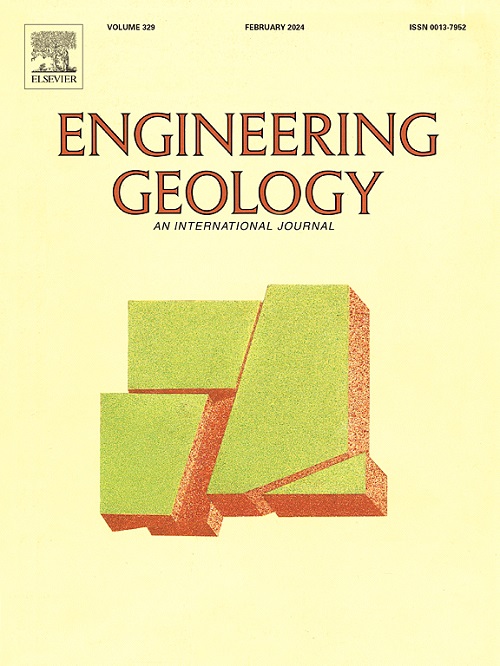Exploring joint orientation effects on rock wedge stability: Experimental and discrete element analysis
Abstract
The primary objective of this study was to examine and analyze the sliding behavior of rock wedge slopes with the interaction of three joint sets, considering the influence of plunge angles, included wedge angles between joints, and gravity conditions. The discontinuity planes with varying dip directions relative to the wedge's plunge direction were analyzed. The stability assessment of wedge failure was initially reviewed, explicitly focusing on limit equilibrium (LE) analysis and in-house physical tests. Centrifuge tests and discrete element analysis using the 3DEC software were then performed to explore the factors influencing the failure characteristics of the slopes. Additionally, two mitigation strategies were proposed to enhance the stability of the rock wedge slopes. The key findings include the significant impact of plunge angle on wedge slope stability compared to the included wedge angle between joints, the strong effect of gravitational conditions on the collapsing ratio of wedge units, and the higher risk posed by wedge slopes with discontinuity planes dipping out of the slope. The numerical simulation results highlighted the importance of considering joint spacing in slope stability assessments. Mitigation methods such as fixing key wedge blocks were found to effectively reduce the wedge collapsing ratio and improve rock slope stability under more realistic stress levels. This study provides valuable insights for formulating prevention and mitigation strategies, useful for enhancing safety and reducing the potential damage caused by rock wedge failure events.

 求助内容:
求助内容: 应助结果提醒方式:
应助结果提醒方式:


